A keystroke analysis to study writing: a bibliometric review using R and VOSviewer
Data obtained by means of keystroke logging software, which records all writing events, i.e., all keypresses with their time stamps, are widely used in different research fields and practical applications – from early detection of cognitive impairments to user authentication. Keystroke logging software have become especially popular in writing studies since it allows researchers to observe writing processes unobtrusively and increases their understanding of what happens “behind the scenes” of text production. This methodology has been used in writing studies since the advent of affordable computers in the 1990s, however, there has still been no bibliometric review that would provide a holistic picture of this field and identify hot topics and trends, perform citation analysis and identify the most productive authors and countries in the field of writing research using keystroke data. This paper is pioneer research to conducting a bibliometric analysis on the field “keystroke analysis to study writing” aimed at filling in the gap. A search was conducted in the bibliographic database Scopus on July 11, 2024. We included studies published in English post-2000 that discuss the use of keystroke data and methodology to study writing process. This review followed the guidelines of the PRISMA protocol to perform the study search and selection. The search yielded 336 documents of which 273 met out inclusion criteria. The records retrieved were analysed using the bibliometrix R-package and VOSviewer software. Using these tools in combinations, we implemented both performance analysis which examines the contributions of research constituents to a given field and science mapping which is aimed at revealing the relationships between research constituents. The contribution of this study is twofold. Firstly, it provides an in-depth bibliometric analysis of an actively developing field of research which is rather limited in terms osf the countries and institutions involved (and the languages of the texts analysed), hopefully saving time and effort for researchers new to the field. Secondly, we provide an example of using bibliometrix and VOSviewer for a bibliometric analysis which could be easily replicated in further research.
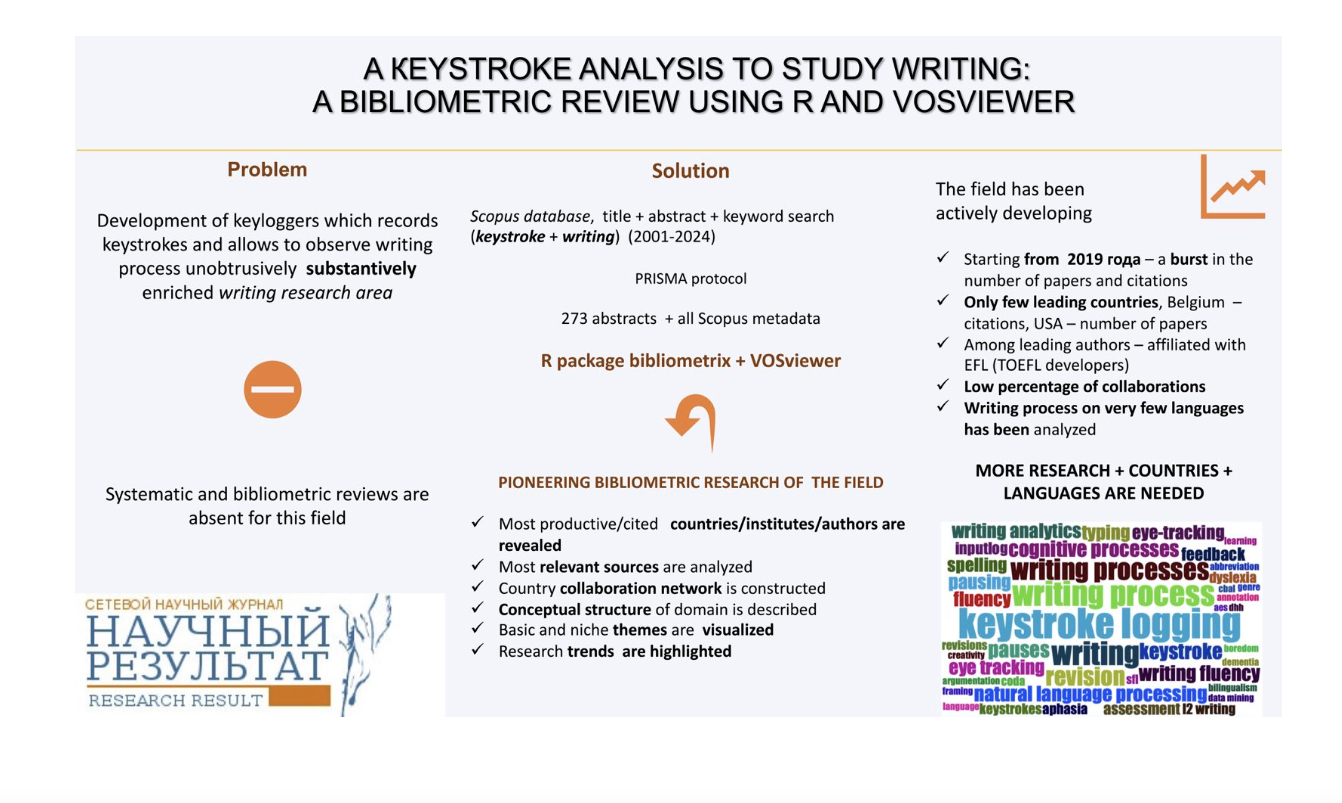
Figures
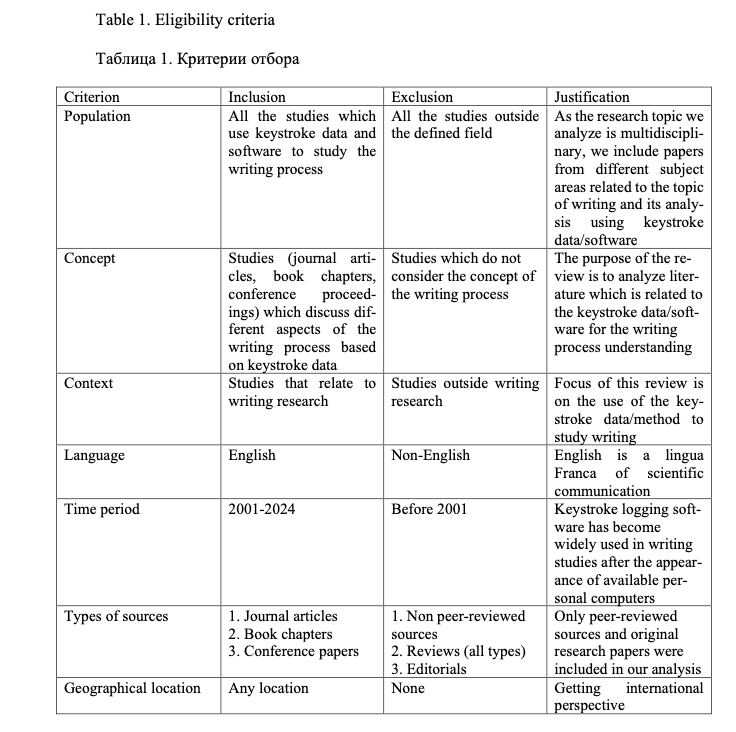
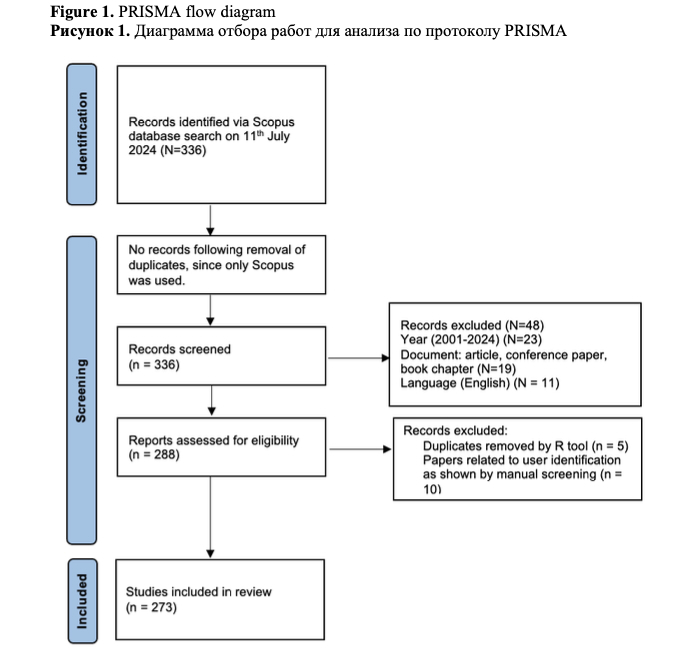

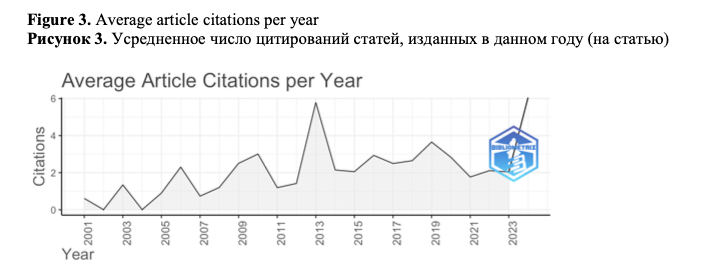
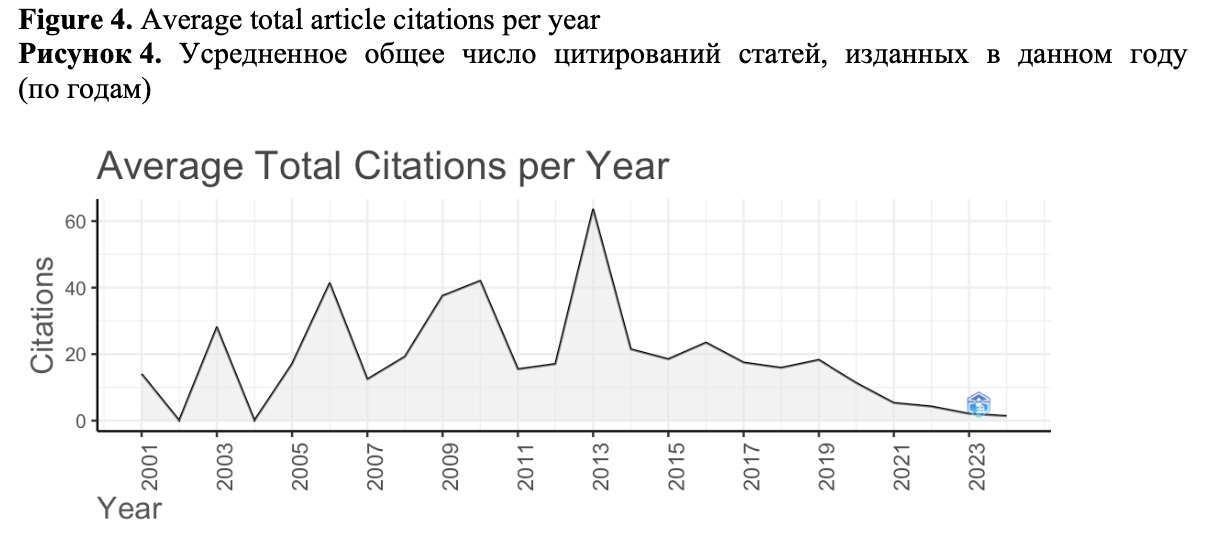
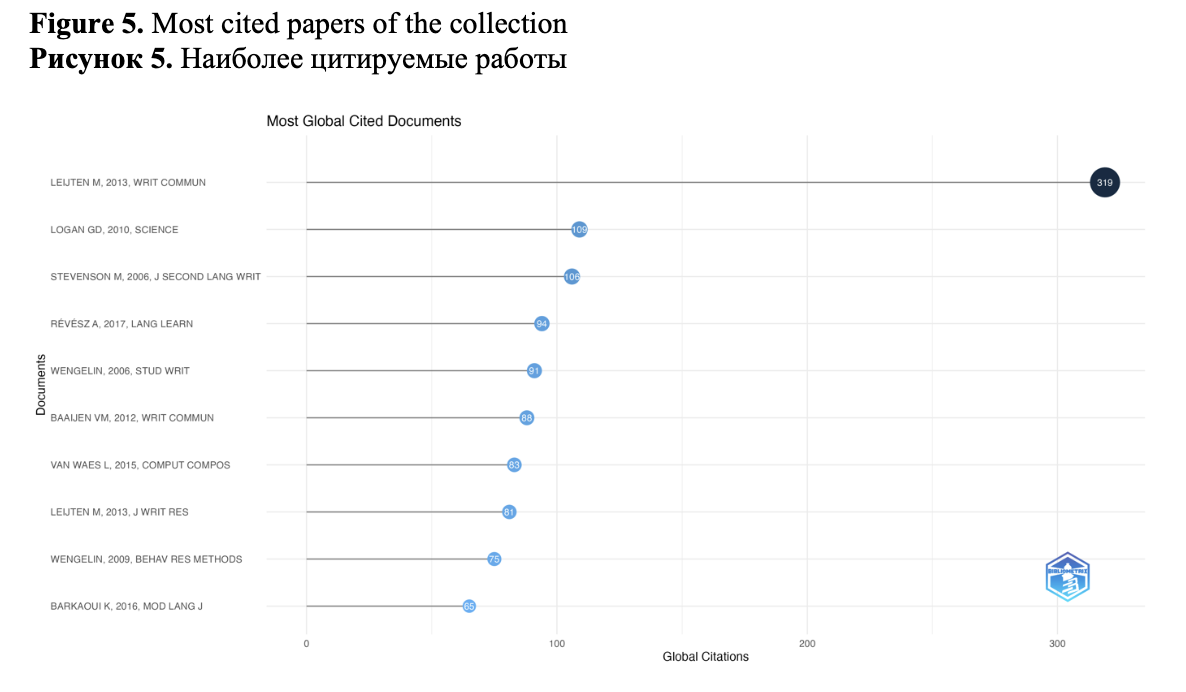

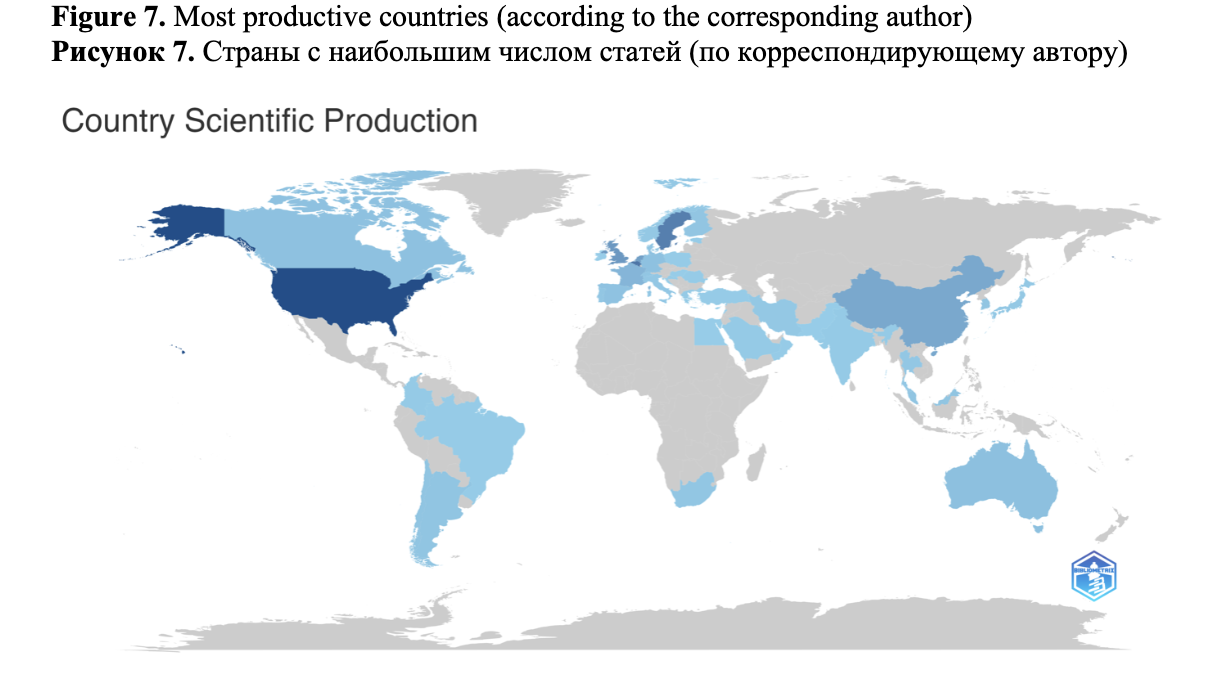
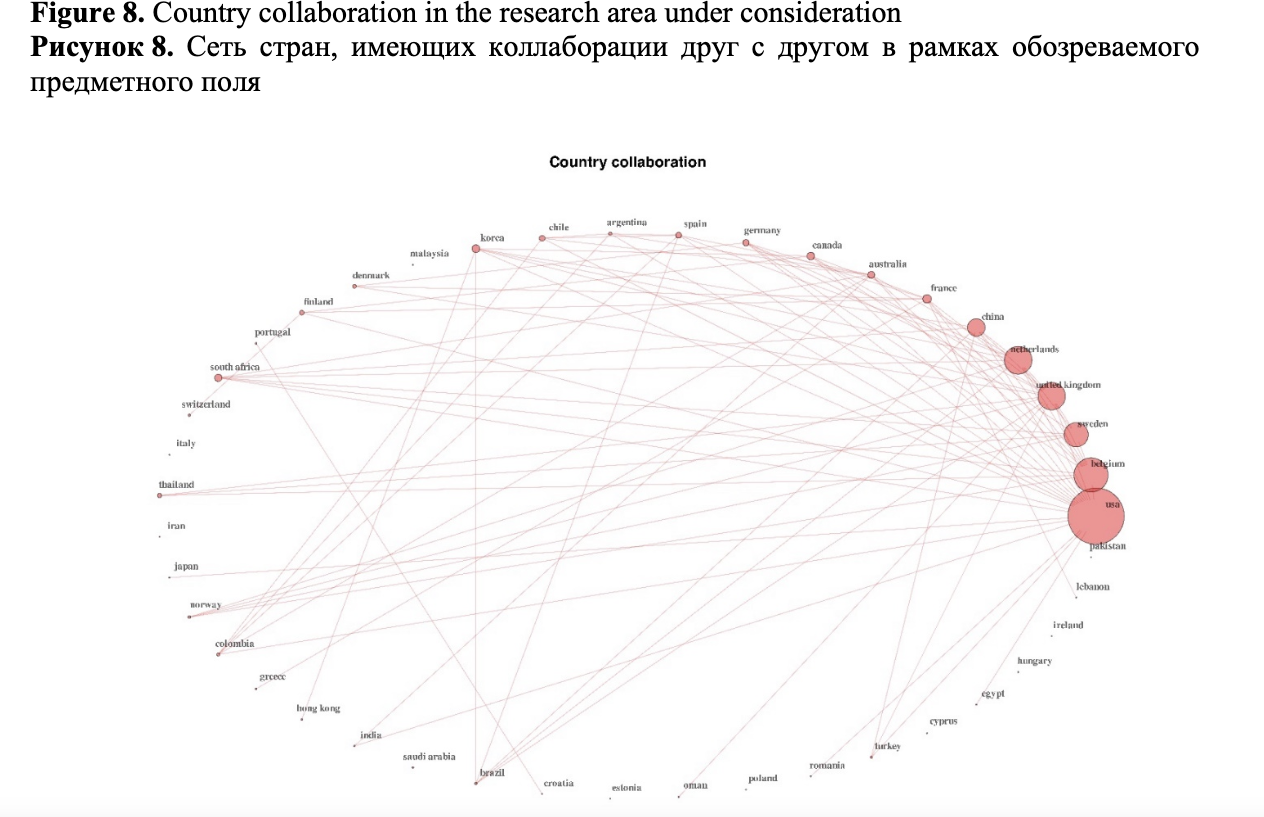
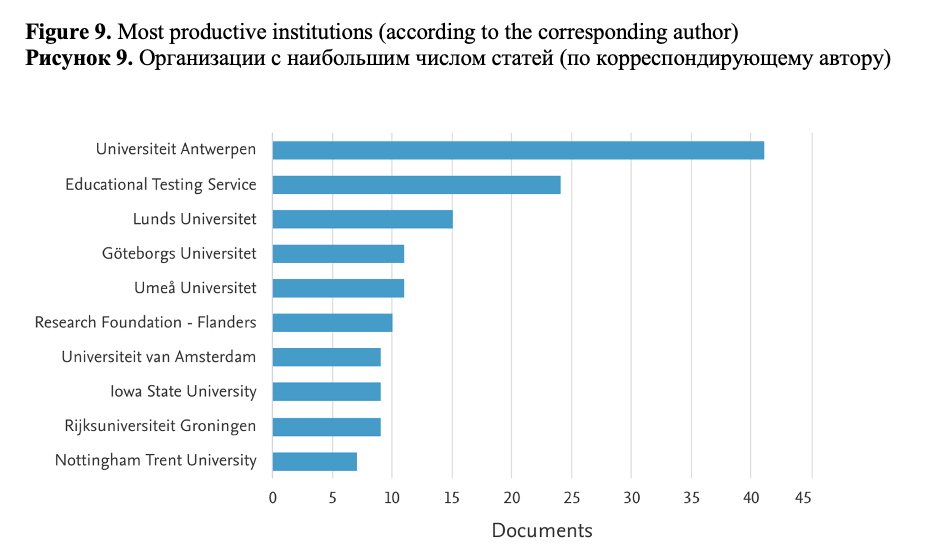











Dekhnich, O. V., Litvinova, T. A. (2024). A keystroke analysis to study writing: a bibliometric review using R and VOSviewer, Research Result. Theoretical and Applied Linguistics, 10 (3), 91-115.


















While nobody left any comments to this publication.
You can be first.
Alfalahi, H., Khandoker, A. H., Chowdhury, N., Iakovakis, D., Dias, S. B., Chaudhuri, K. R. and Hadjileontiadis, L. J. (2022). Diagnostic accuracy of keystroke dynamics as digital biomarkers for fine motor decline in neuropsychiatric disorders: a systematic review and meta-analysis. Sci Rep 12, 7690. https://doi.org/10.1038/s41598-022-11865-7
Aria, M. and Cuccurullo, C. (2017). bibliometrix: An R-tool for comprehensive science mapping analysis. Journal of Informetrics 11(4), 959–975. https://doi.org/10.1016/j.joi.2017.08.007
Bixler, R. and D’Mello, S. (2013). Detecting boredom and engagement during writing with keystroke analysis, task appraisals, and stable traits. In Proceedings of the 2013 International conference on Intelligent user interfaces (IUI ‘13). Association for Computing Machinery, New York, NY, USA, 225–234. https://doi.org/10.1145/2449396.2449426
Büyükkıdık, S. (2022). A bibliometric analysis: A tutorial for the bibliometrix package in R using IRT literature. Journal of Measurement and Evaluation in Education and Psychology 13(3), 164–193. https://doi.org/10.21031/epod.1069307
Cui, Y., Mou, J. and Liu, Y. (2018). Knowledge mapping of social commerce research: A visual analysis using CiteSpace. Electronic Commerce Research, 18(4), 837–868.
Derviş, H. (2019). Bibliometric analysis using bibliometrix an R package. Journal of Scientometric Research 8(3), 156–160. https://doi.org/10.5530/jscires.8.3.32
Donthu, N., Kumar, S., Mukherjee, D., Pandey, N. and Lim, W. M. (2021). How to conduct a bibliometric analysis: An overview and guidelines. Journal of Business Research 133, 285–296. https://doi.org/10.1016/j.jbusres.2021.04.070
Farrukh, M., Raza, A., Mansoor, A., Khan, M. S. and Lee, J. W. C. (2023). Trends and patterns in pro-environmental behaviour research: a bibliometric review and research agenda. Benchmarking: an International Journal 30(3), 681–696. https://doi.org/10.1108/BIJ-10-2020-0521
Lee, S. A. and Park, J. H. (2024). Do Individuals with Mild Cognitive Impairment and Healthy Aging People Have Different Keystroke Dynamics? A Systematic Review. International Journal of Gerontology 18(2), 64–69. https://doi.org/10.6890/IJGE.202404_18(2).0001
Leijten, M. and Van Waes, L. (2013). Keystroke logging in writing research: Using inputlog to analyze and visualize writing processes. Written Communication 30(3), 358–392. https://doi.org/10.1177/0741088313491692
Leijten, M., Van Waes, L., Schriver, K. and Hayes, J. R. (2013). Writing in the workplace: Constructing documents using multiple digital sources. Journal of Writing Research 5(3), 285–337. https://doi.org/10.17239/jowr-2014.05.03.3
Logan, G. D. and Crump, M. J. (2010). Cognitive illusions of authorship reveal hierarchical error detection in skilled typists. Science 330(6004), 683–686. https://doi.org/10.1126/science.1190483
Maalej, A. and Kallel, I. (2020). Does Keystroke Dynamics tell us about Emotions? A Systematic Literature Review and Dataset Construction. In 2020 16th International Conference on Intelligent Environments (IE), Madrid, Spain, 60–67. https://doi.org/10.1109/IE49459.2020.9155004
Nguyen, T. M., Leow, A. D. and Ajilore, O. (2023). A Review on Smartphone Keystroke Dynamics as a Digital Biomarker for Understanding Neurocognitive Functioning. Brain Sci. 13, 959. https://doi.org/10.3390/brainsci13060959
Omotehinwa, T. O. (2022). Examining the developments in scheduling algorithms research: a bibliometric approach. Heliyon 8(5), e09510.
Passas, I. (2024). Bibliometric Analysis: The Main Steps. Encyclopedia 4, 1014–1025. https://doi.org/10.3390/encyclopedia4020065
Quraishi, S. J. and Bedi, S. S. (2018). Keystroke Dynamics Biometrics, A tool for User Authentication – Review. In 2018 International Conference on System Modeling & Advancement in Research Trends (SMART), Moradabad, India, 248–254. https://doi.org/10.1109/SYSMART.2018.8746932
Rashid, M. F. A. (2023). How to Conduct a Bibliometric Analysis using R Packages: A Comprehensive Guidelines. Journal of Tourism, Hospitality & Culinary Arts 15(1), 24–39.
Raul, N., Shankarmani, R. and Joshi, P. (2020). A Comprehensive Review of Keystroke Dynamics-Based Authentication Mechanism. In: Khanna, A., Gupta, D., Bhattacharyya, S., Snasel, V., Platos, J., Hassanien, A. (eds). International Conference on Innovative Computing and Communications. Advances in Intelligent Systems and Computing, vol. 1059. Springer, Singapore. https://doi.org/10.1007/978-981-15-0324-5_13
Rejeb, A., Rejeb, K., Appolloni, A., Kayikci, Y. and Iranmanesh, M. (2023). The landscape of public procurement research: a bibliometric analysis and topic modelling based on Scopus. Journal of Public Procurement 23(2), 145–178. https://doi.org/10.1108/JOPP-06-2022-0031
Saini, G. K., Lievens, F. and Srivastava, M. (2022). Employer and internal branding research: a bibliometric analysis of 25 years. Journal of Product & Brand Management 31(8), 1196–1221. https://doi.org/10.1108/JPBM-06-2021-3526
Small, H. (1973). Co-citation in the scientific literature: a new measure of the relationship between two documents. J Am Soc Inf Sci 24, 265–269. https://doi.org/10.1002/asi.4630240406
Stevenson, M., Schoonen, R. and Glopper, K. de. (2006). Revising in two languages: A multi-dimensional comparison of online writing revisions in L1 and FL. Journal of Second Language Writing 15(3), 201–233. https://doi.org/10.1016/j.jslw.2006.06.002
Tikhonova E., Kosycheva M., Kasatkin P. (2023). Exploring Academic Culture: Unpacking its Definition and Structure (a Systematic Scoping Review). Journal of Language and Education 9(36), 151-168. https://doi.org/10.17323/jle.2023.18491
Van Eck, N. J. and Waltman, L. (2014). Visualizing bibliometric networks. In Y. Ding, R. Rousseau and D. Wolfram (Eds.), Measuring scholarly impact: Methods and practice (pp. 285–320). Springer. http://dx.doi.org/10.1007/978-3-319-10377-8_13
Wang, S. and Gu, Z. (2022). Mapping the Field of Value Chain: A Bibliometric and Visualization Analysis. Sustainability 14, 7063. https://doi.org/10.3390/su14127063
Wengelin, Å. (2006). Examining Pauses in Writing: Theory, Methods and Empirical Data. In Computer Keystroke Logging and Writing: Methods and Applications. Leiden, The Netherlands: Brill. https://doi.org/10.1163/9780080460932_008
Wengelin, Å. and Johansson, V. (2023). Investigating Writing Processes with Keystroke Logging. In: Kruse, O. et al. Digital Writing Technologies in Higher Education. Springer, Cham. https://doi.org/10.1007/978-3-031-36033-6_25
Yang, L. and Qin, S.-F. (2021). A Review of Emotion Recognition Methods From Keystroke, Mouse, and Touchscreen Dynamics. IEEEAccess 9, 162197–162213. https://doi.org/10.1109/ACCESS.2021.3132233
Tatiana A. Litvinova acknowledges the support of the Ministry of Education of the Russian Federation (the research was supported by the Ministry of Education of the Russian Federation within the framework of the state task in the field of science, topic number QRPK-2024-0011). Olga V. Dekhnich received no financial support for the research, authorship, and publication of this article.